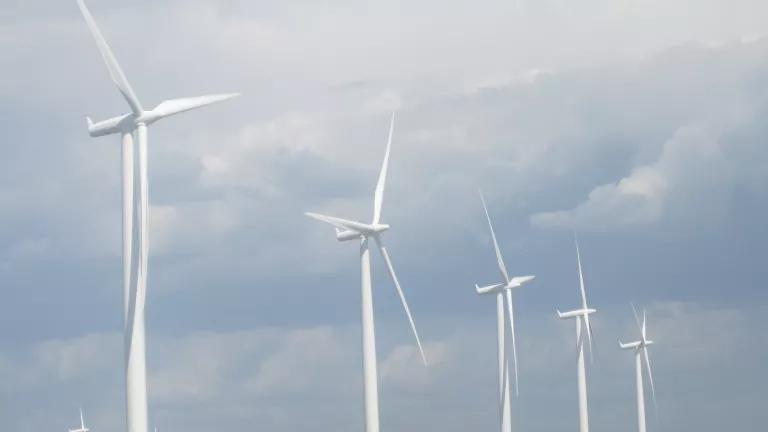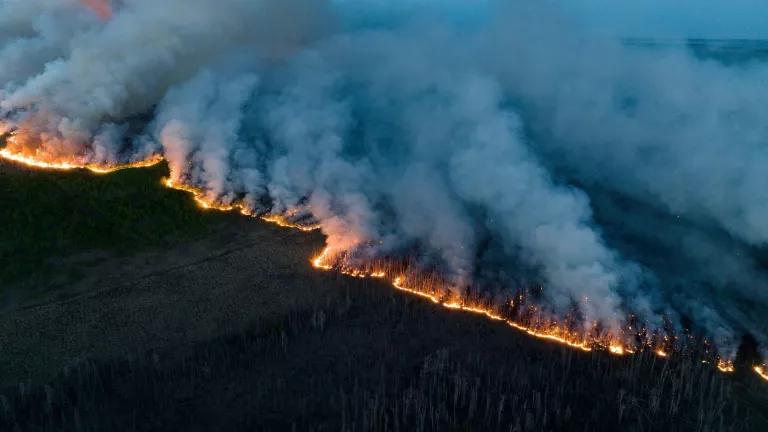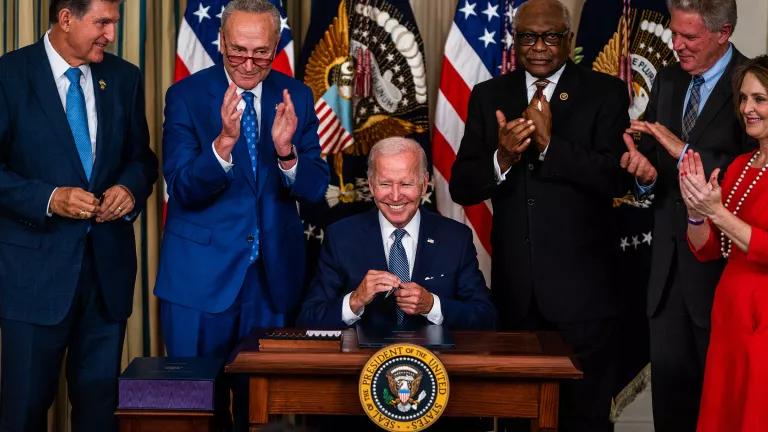Health Officials (Mostly) Not Waiting to Act on Climate

A new report released by EcoAdapt with the support of NRDC finds that public health departments in 16 U.S. states are building their capacity to deal with the myriad health harms of climate disruption—even if they don’t have a legal mandate or formal plan to do so.
Virtually all of the 54 public health and healthcare practitioners EcoAdapt surveyed and interviewed in late 2018 and early 2019 agreed that climate change is “having or is likely to have a significant effect on health and health services.” (The 2 percent of holdouts answered “maybe,” rather than “no.”) Eighty-five percent of those respondents also reported that they have adjusted their health-related activities to address climate change.
That significant majority is impressive, given that just 4 of the 16 states have a standalone state health department plan to assess and prepare for increases in illnesses and deaths associated with heat, hurricanes, mosquitoes and ticks, and other climate-related hazards (see map below).
Building Capacity for Climate and Health Adaptation
Most of the climate and health adaptation activities at the surveyed public health departments fell into a few categories:
- Assessing climate and health threats and developing adaptation plans. E.g., Multiple tribes reported planning activities that take climate change, existing non-climate health threats, and socioeconomic vulnerabilities into account.
- Monitoring environmental and climatic conditions and impacts. E.g., The Philadelphia Department of Public Health used local emergency room and weather data to develop a heat warning system. The system triggers a range of protective city services, including a call center for residents who need extra help during a heat wave.
- Climate and health education and outreach campaigns. E.g., The Washington State Department of Health recently ramped up efforts to educate residents about the health harms of wildfire smoke and what they can do to protect themselves.
- Enhancing resources and tools for climate-informed action. E.g., In New York, the State Department of Health has worked with the Office for the Aging to ensure older adults have ready access to maps of cooling centers.
- Collaborating across sectors and multiple levels of government. E.g., The Michigan Department of Health and Human Services has been working with Michigan State University, Marquette County officials, and community partners to integrate climate and health into infrastructure and transportation plans.

Barriers to Action
The bad news is that implementation of health-specific climate adaptation doesn’t match the scope and scale of the climate challenge in the 16 states. For instance, the Virginia Department of Health has barely started evaluating “where it stands as an agency on the topic of climate change and how it can address … public concerns” about impacts on individuals. The Department’s internal workgroup is currently unfunded, and its timeline for initial action is unclear. Meanwhile, climate change is already harming the health of Virginians.
This problem is hardly unique to the United States. According to a 2018 assessment by the United Nations Environment Program:
“There is a significant global adaptation gap in health, as efforts are well below the level required to minimize negative health outcomes.”
So, what’s standing in the way of more robust climate and health adaptation in U.S. health departments? There were three broad categories of responses from those surveyed and interviewed by EcoAdapt: resource limitations; low prioritization of climate adaptation; and gaps in climate-relevant knowledge, skills, and data (see graph below).

The Need for State and Federal Leadership
One of the lessons from the EcoAdapt report is that public health departments are more likely to engage in ambitious climate action when they have both state and federal leadership and support. For example, Florida State University is part of the Centers for Disease Control and Prevention’s Climate-Ready States and Cities Initiative (CRSCI). The CRSCI is uniquely positioned to provide sustained funding—pending annual Congressional appropriations—and scientific and technical advice from a host of federal experts. The program also facilitates the dissemination of best practices among CRSCI states and promotes greater integration between disciplines and departments.
However, Florida’s state leadership neither acknowledges climate change nor requires county health departments to engage in climate and health adaptation. That means the state’s CRSCI-funded program is “focusing on incremental progress, providing whatever information, resources, support, and feedback they can to counties tackling adaptation in a politically unsupportive environment.”
Contrast Florida with Oregon, the only one of the 16 states with both a state climate adaptation plan and a specific climate and health resilience plan. Oregon, which was one of the first states to receive funding under CRSCI, also has supportive state leadership. Oregon’s Multnomah County, home to the City of Portland, cites that leadership as one of the factors enabling “bold action as well as frank and honest discussion and reflection.”
Across America, public health officials are scrambling to protect the people they serve from heat-related deaths, emerging infectious diseases, respiratory illnesses associated with wildfire smoke, and other climate-related harms. They shouldn’t have to do it alone. At this critical moment, our elected leaders in D.C., state capitals, and cities need to strongly and consistently demonstrate that climate adaptation is a priority, and that public health agencies will get the resources they need to help prepare and protect communities across the country.
***
EcoAdapt’s full report, detailed case studies of climate adaptation activities in state and local health departments, and other health and climate adaptation resources are available on the Climate Adaptation Knowledge Exchange.




